-
 Bitcoin
Bitcoin $106,437.2012
0.82% -
 Ethereum
Ethereum $2,442.5287
0.82% -
 Tether USDt
Tether USDt $1.0005
-0.02% -
 XRP
XRP $2.1812
-0.27% -
 BNB
BNB $645.1327
0.45% -
 Solana
Solana $146.2379
0.39% -
 USDC
USDC $0.9999
-0.01% -
 TRON
TRON $0.2751
0.92% -
 Dogecoin
Dogecoin $0.1662
-0.23% -
 Cardano
Cardano $0.5827
-1.22% -
 Hyperliquid
Hyperliquid $37.5225
0.04% -
 Bitcoin Cash
Bitcoin Cash $479.0877
4.02% -
 Sui
Sui $2.7846
-3.27% -
 Chainlink
Chainlink $13.3576
0.84% -
 UNUS SED LEO
UNUS SED LEO $9.0252
-1.20% -
 Stellar
Stellar $0.2455
-1.07% -
 Avalanche
Avalanche $18.0680
-1.81% -
 Toncoin
Toncoin $2.8948
-1.07% -
 Shiba Inu
Shiba Inu $0.0...01164
-1.65% -
 Litecoin
Litecoin $85.0637
-0.06% -
 Hedera
Hedera $0.1526
-0.89% -
 Monero
Monero $316.2941
0.78% -
 Ethena USDe
Ethena USDe $1.0003
-0.04% -
 Polkadot
Polkadot $3.4113
-1.87% -
 Dai
Dai $1.0000
-0.01% -
 Bitget Token
Bitget Token $4.4488
5.16% -
 Uniswap
Uniswap $7.1740
3.09% -
 Pi
Pi $0.5968
11.43% -
 Pepe
Pepe $0.0...01010
-0.65% -
 Aave
Aave $264.3189
0.40%
How to judge when the HMA moving average is flat for 5 consecutive days in an upward trend?
A flat Hull Moving Average over 5 days in an uptrend may signal a temporary pause, suggesting consolidation rather than reversal, especially if broader trends and volume remain bullish.
Jun 25, 2025 at 12:29 pm
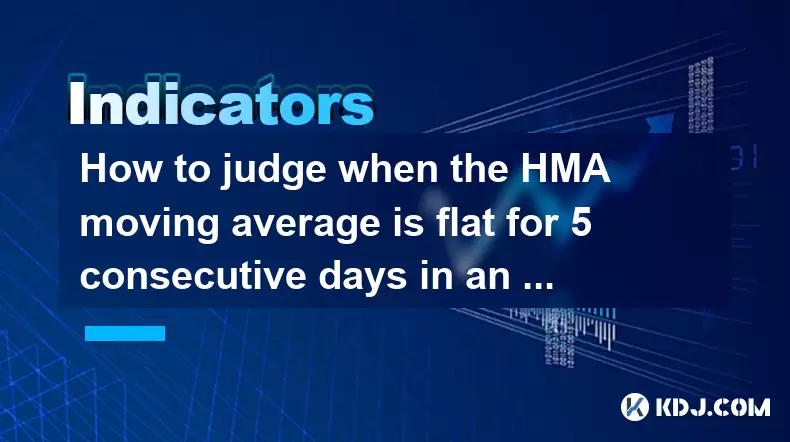
Understanding the HMA Moving Average
The Hull Moving Average (HMA) is a popular technical indicator used in cryptocurrency trading to identify trend direction and potential reversals. Unlike traditional moving averages, such as the Simple Moving Average (SMA) or Exponential Moving Average (EMA), the HMA reduces lag by applying weighted calculations across multiple periods. This makes it more responsive to price changes while maintaining smoothness in its line.
In the context of identifying when the HMA is flat for 5 consecutive days, it's essential to understand how the HMA behaves during different market conditions. A flat HMA suggests that there is no significant directional movement in the asset’s price over that period, which could indicate consolidation or a pause in an ongoing trend.
Important: The HMA can be calculated using the formula:
HMA = WMA(2*WMA(n/2) - WMA(n)), sqrt(n)), where WMA refers to Weighted Moving Average and n is the number of periods.
Identifying a Flat HMA Over 5 Days
To determine if the HMA has been flat for five consecutive days, you need to compare the current value of the HMA with its previous values. A flat HMA means that the difference between today’s HMA and yesterday’s HMA is minimal or zero. Here are the steps:
- Calculate the daily HMA value on a daily chart over at least the last 5 days.
- Compare each day’s HMA value with the prior day’s value.
- Check if the absolute difference between these values remains below a certain threshold — this threshold depends on your tolerance for noise and volatility.
- If the HMA shows little to no change over 5 consecutive days, mark it as flat.
Important: Traders often use a small percentage (e.g., 0.1% or less) as a threshold to determine whether the HMA is effectively flat.
Confirming the Upward Trend Context
Before concluding that a flat HMA within an upward trend indicates a meaningful pattern, it's crucial to confirm the broader trend direction. In an uptrend, prices generally move higher with each swing. To verify the trend:
- Use higher timeframes like weekly charts to assess long-term direction.
- Check if the price remains above key moving averages like the 50-day or 200-day SMA.
- Look for consistent higher highs and higher lows in price action.
- Ensure that volume supports the upward movement, especially after pullbacks.
Important: A flat HMA during an uptrend may suggest a temporary pause rather than a reversal, especially if other indicators remain bullish.
Using Charting Tools to Visualize the Pattern
Most modern charting platforms, such as TradingView, Binance, or MetaTrader, allow users to add custom indicators like the HMA. Here’s how to visualize the HMA flattening:
- Add the HMA indicator to your chart with a period of 20 or 50, depending on your strategy.
- Zoom into the daily timeframe to observe the HMA’s behavior over the past five days.
- Use horizontal lines or annotations to mark days where the HMA appears visually flat.
- Overlay volume and price data to see if the flat HMA coincides with low volatility or indecision.
Important: Some platforms offer alerts based on HMA crossovers or slope changes, which can help automate monitoring for flat periods.
Backtesting the Flat HMA Signal
Once you’ve identified historical instances where the HMA was flat for five days in an uptrend, backtesting can help assess the reliability of this signal. Here’s how to proceed:
- Select a cryptocurrency pair like BTC/USDT or ETH/USDT and gather historical data for at least one year.
- Mark all instances where the HMA remained flat for five consecutive days during an uptrend.
- Analyze what happened after those flat periods — did the price continue rising, consolidate, or reverse?
- Measure average returns, drawdowns, and win rates associated with entering or exiting trades around these patterns.
Important: Backtesting should include both bull and bear market phases to ensure robustness of the signal across cycles.
Frequently Asked Questions
Q: What does a flat HMA typically indicate in crypto markets?
A flat HMA usually signals a lack of momentum or a consolidation phase. In an uptrend, it might represent a temporary pause before the trend resumes, but traders should watch for signs of reversal.
Q: Can I use HMA flattening as a standalone trading signal?
While useful, the HMA should not be used alone. Combining it with volume analysis, support/resistance levels, and other indicators like RSI or MACD improves accuracy.
Q: Is the HMA more effective on certain timeframes?
The HMA works well on daily and 4-hour charts for trend identification. Shorter timeframes like 15-minute or 1-hour may produce too much noise, reducing its effectiveness.
Q: How do I adjust the HMA settings for different cryptocurrencies?
Adjust the HMA period based on the asset’s volatility. For highly volatile altcoins, shorter periods (e.g., 10–20) may be better, while major coins like Bitcoin can handle longer periods (e.g., 50).
Disclaimer:info@kdj.com
The information provided is not trading advice. kdj.com does not assume any responsibility for any investments made based on the information provided in this article. Cryptocurrencies are highly volatile and it is highly recommended that you invest with caution after thorough research!
If you believe that the content used on this website infringes your copyright, please contact us immediately (info@kdj.com) and we will delete it promptly.
- Dogecoin's Crossroads: Buy Signal or Risky Business?
- 2025-06-25 18:25:12
- Pi Network Price Prediction: Navigating the Coin's Breakout and Potential Drop
- 2025-06-25 18:25:12
- Shiba Inu, Dogecoin, and Meme Coins: What's the Hype in 2025?
- 2025-06-25 16:25:12
- JasmyCoin's Wild Ride: 6x Setup or Just a Mirage?
- 2025-06-25 16:25:12
- Mastercard's Stablecoin Integration: Revolutionizing On-Chain Commerce, NY Style
- 2025-06-25 16:45:12
- Malaysia's Cash Conundrum: When Coin Refusal Sparks Debate
- 2025-06-25 16:45:12
Related knowledge
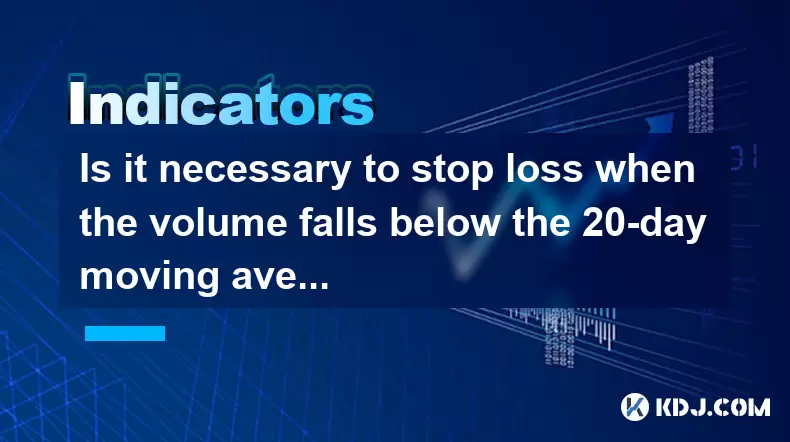
Is it necessary to stop loss when the volume falls below the 20-day moving average?
Jun 25,2025 at 05:00pm
Understanding the 20-Day Moving Average in Cryptocurrency TradingIn cryptocurrency trading, technical analysis plays a pivotal role in decision-making. One of the most commonly used indicators is the 20-day moving average (MA). This metric calculates the average price of an asset over the past 20 days and helps traders identify trends and potential reve...
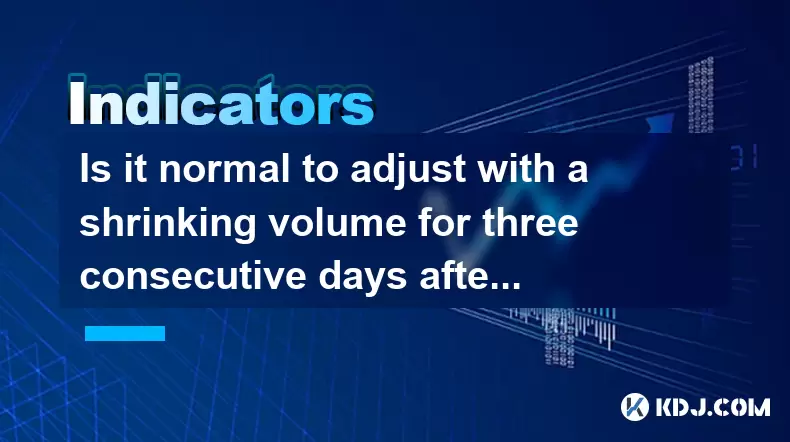
Is it normal to adjust with a shrinking volume for three consecutive days after breaking through the previous high with a large volume?
Jun 25,2025 at 03:49pm
Understanding Volume and Price Relationship in Cryptocurrency TradingIn cryptocurrency markets, volume is a critical metric that reflects the number of assets traded over a specific period. When a cryptocurrency breaks through a previous high with large volume, it typically signals strong buying pressure and market confidence. However, it's not uncommon...
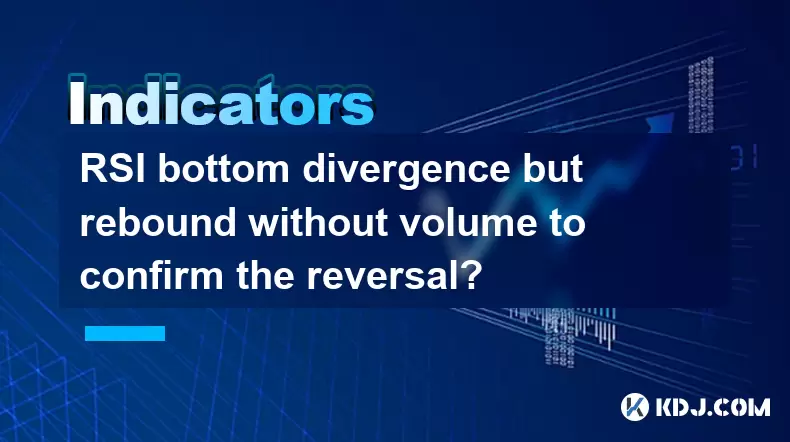
RSI bottom divergence but rebound without volume to confirm the reversal?
Jun 25,2025 at 04:42pm
Understanding RSI Bottom DivergenceRelative Strength Index (RSI) is a momentum oscillator used in technical analysis to measure the speed and change of price movements. RSI bottom divergence occurs when the price of an asset makes a new low, but the RSI does not confirm that low and instead forms a higher low. This pattern suggests weakening downward mo...
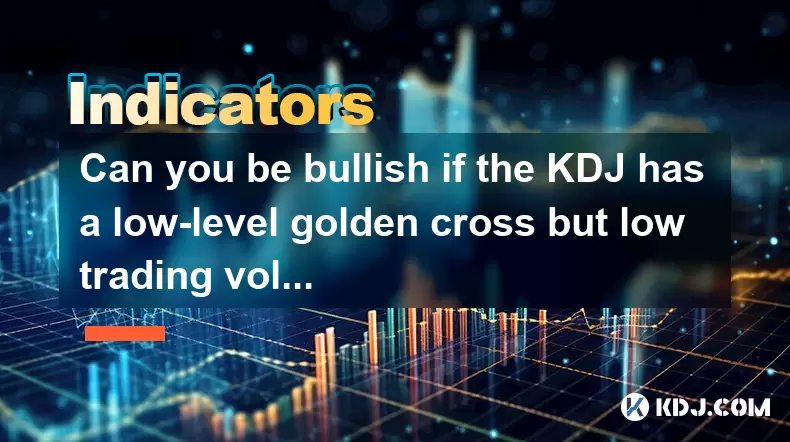
Can you be bullish if the KDJ has a low-level golden cross but low trading volume?
Jun 25,2025 at 03:14pm
Understanding the KDJ Indicator in Cryptocurrency TradingThe KDJ indicator, also known as the stochastic oscillator, is a momentum-based technical analysis tool widely used in cryptocurrency trading. It comprises three lines: the %K line (fast stochastic), the %D line (slow stochastic), and the J line (divergence value). These lines oscillate between 0 ...
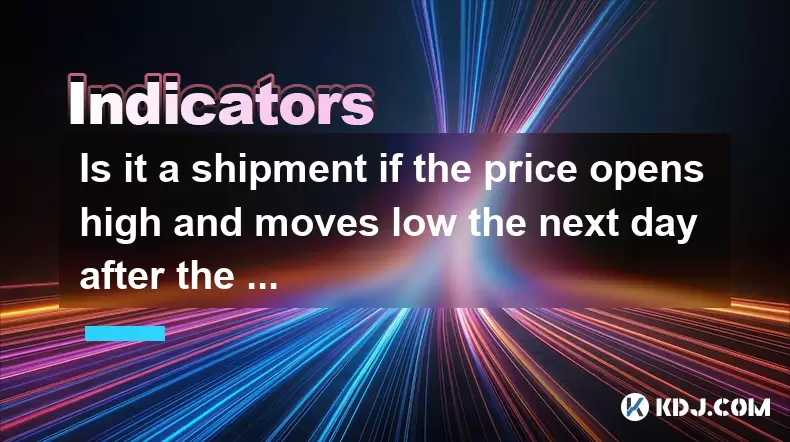
Is it a shipment if the price opens high and moves low the next day after the daily limit with huge volume?
Jun 25,2025 at 12:56pm
Understanding the Concept of a Shipment in Cryptocurrency TradingIn cryptocurrency trading, the term shipment refers to a scenario where large volumes of an asset are sold off rapidly, often leading to a significant price drop. This is typically associated with whale activity or coordinated selling by major holders. When traders observe certain patterns...
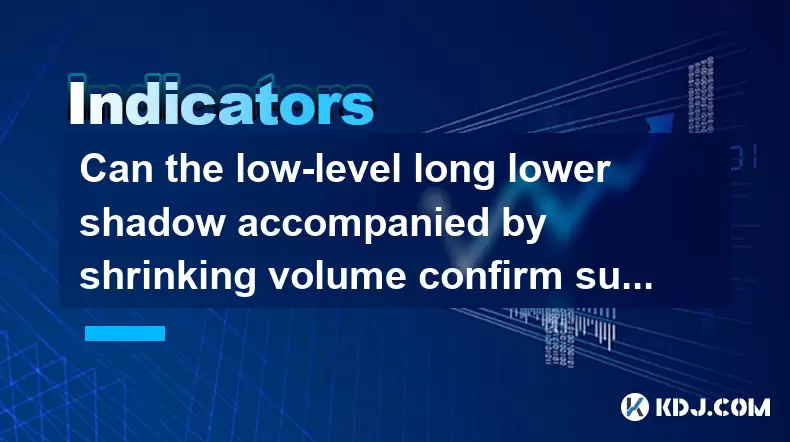
Can the low-level long lower shadow accompanied by shrinking volume confirm support?
Jun 25,2025 at 03:08pm
Understanding the Long Lower Shadow Candlestick PatternA long lower shadow candlestick pattern occurs when a candle closes near its high but has a significantly long lower wick, indicating that sellers pushed prices down during the session but were met with strong buying pressure that drove the price back up. This pattern is often seen as a potential si...

Is it necessary to stop loss when the volume falls below the 20-day moving average?
Jun 25,2025 at 05:00pm
Understanding the 20-Day Moving Average in Cryptocurrency TradingIn cryptocurrency trading, technical analysis plays a pivotal role in decision-making. One of the most commonly used indicators is the 20-day moving average (MA). This metric calculates the average price of an asset over the past 20 days and helps traders identify trends and potential reve...

Is it normal to adjust with a shrinking volume for three consecutive days after breaking through the previous high with a large volume?
Jun 25,2025 at 03:49pm
Understanding Volume and Price Relationship in Cryptocurrency TradingIn cryptocurrency markets, volume is a critical metric that reflects the number of assets traded over a specific period. When a cryptocurrency breaks through a previous high with large volume, it typically signals strong buying pressure and market confidence. However, it's not uncommon...

RSI bottom divergence but rebound without volume to confirm the reversal?
Jun 25,2025 at 04:42pm
Understanding RSI Bottom DivergenceRelative Strength Index (RSI) is a momentum oscillator used in technical analysis to measure the speed and change of price movements. RSI bottom divergence occurs when the price of an asset makes a new low, but the RSI does not confirm that low and instead forms a higher low. This pattern suggests weakening downward mo...

Can you be bullish if the KDJ has a low-level golden cross but low trading volume?
Jun 25,2025 at 03:14pm
Understanding the KDJ Indicator in Cryptocurrency TradingThe KDJ indicator, also known as the stochastic oscillator, is a momentum-based technical analysis tool widely used in cryptocurrency trading. It comprises three lines: the %K line (fast stochastic), the %D line (slow stochastic), and the J line (divergence value). These lines oscillate between 0 ...

Is it a shipment if the price opens high and moves low the next day after the daily limit with huge volume?
Jun 25,2025 at 12:56pm
Understanding the Concept of a Shipment in Cryptocurrency TradingIn cryptocurrency trading, the term shipment refers to a scenario where large volumes of an asset are sold off rapidly, often leading to a significant price drop. This is typically associated with whale activity or coordinated selling by major holders. When traders observe certain patterns...

Can the low-level long lower shadow accompanied by shrinking volume confirm support?
Jun 25,2025 at 03:08pm
Understanding the Long Lower Shadow Candlestick PatternA long lower shadow candlestick pattern occurs when a candle closes near its high but has a significantly long lower wick, indicating that sellers pushed prices down during the session but were met with strong buying pressure that drove the price back up. This pattern is often seen as a potential si...
See all articles























































































